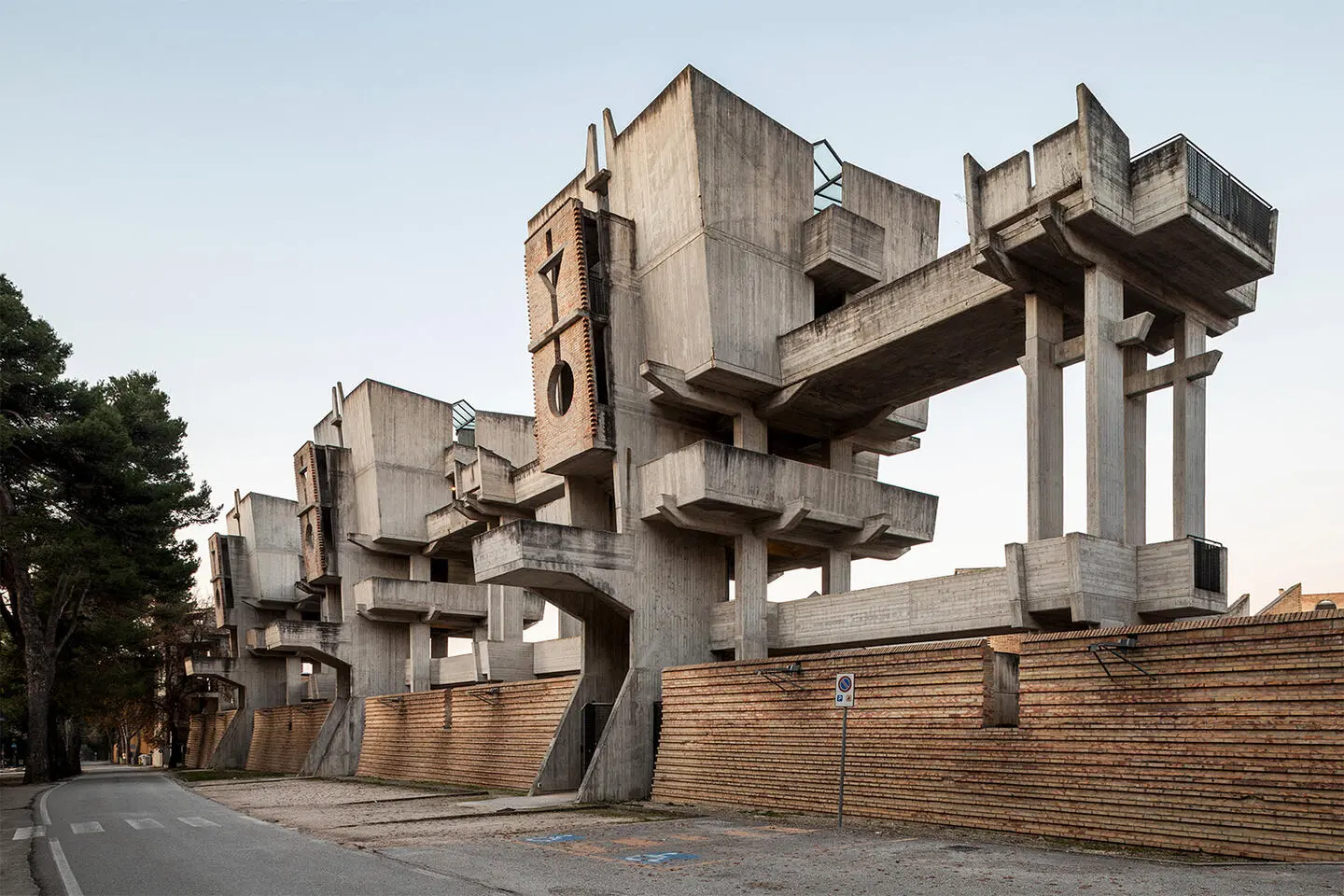October 4, 2024
The word “Brutalism” comes from béton brut (French for “rough concrete”), as well as referring to Jean Dubuffet’s art brut and informal painting. It is a term that became popular in the post-World War II period, especially in the world of architecture, but has found a huge popularization in the last decade.
To find some clues regarding its origins we have to go back to the 1950s. British architect Alison Smithson was one of the first to use the term in the narrative of an architectural project: a small house in Soho described earlier using the term “shed aesthetic.” Of this house she wrote, “If it had been built, it would have been the first exponent of New Brutalism in England, as the preamble to the specifications shows: ‘It is our intention in this building to have the structure entirely exposed, without interior finishes where possible. The contractor must aim at a high standard of basic construction, as in a small shed.'”
Brutalism: history and works of the architectural style
In an essay titled The New Brutalism, published in 1955 by the British journal The Architectural Review, critic Reyner Banham clearly describes the essential characteristics of the architectural style: “Memorability as image; clear exposition of structure; honesty in the use of materials.”
Contextually with the historical period and the rise of new “-isms” in art and culture, the British theorist asserts Brutalism is first and foremost “a flag, a slogan, a policy consciously adopted by a group of artists, regardless of the apparent similarity or dissimilarity of their productions.” In this text Banham analyzes at length the characteristics of the architectural movement and tries to frame which works to include and especially which to exclude.
If Le Corbusier with his celebrated Unité d’Habitation in Marseille (1948) is seen as one of the forerunners and fundamental references of Brutalist architecture, another great master of the twentieth century such as Louis Kahn and his Yale Center for British Art (1953), however, do not fall within the narrow enclosure formulated by the critic.
In the second half of the twentieth century,Brutalist architecture spread globally, but with different languages and meanings in each country. Originating as an architectural style, today it is to be considered no longer as a real, theoretically defined current, but rather takes on an aesthetic form that crosses styles. There are examples of brutalist architecture all over the world, from Italy to Brazil, from Qatar to Japan, via Russia and the United States. Concrete brutality characterizes multiple monuments, churches, residential buildings, viaducts, housing estates, cemeteries and unfinished projects, dialoguing with different styles and materials to give rise to diverse, eclectic and inconsistent interpretations.
We can thus find a wide literature on brutalism and its local declinations. Among those most worthy of mention is the recent publication Brutalist Italy: Concrete architecture from the Alps to the Mediterranean Sea, by photographers Roberto Conte and Stefano Perego. The publisher Phaidon has also just published large global compendium of Brutalist architecture, titled Atlas of Brutalist Architecture, choosing to include buildings that no longer exist.

The return of interest on Brutalist architecture today
But it is on social media and photo-sharing platforms, thanks to the widespread work of architectural enthusiasts and laypeople alike, that Brutalism has its greatest reach. It is therefore equally interesting to analyze Brutalism outside of its narrow architectural context, looking also at the interpretations of an amateur audience.
An article in the online newspaper The Post looks at the motivations behind the recent revival of Brutalist architecture: “Buildings conventionally associated with the Brutalist style are now appreciated by some people for their geometric precision and aesthetic rigor, as well as for the history that in most cases each one bears witness to. By other people, on the other hand, they are considered aesthetically unpleasant and anonymous architecture, a symbol of decay, neglect and social ghettoization, to the point that the possibility and in some cases the need to demolish them is often discussed. That is, the buildings are, in part, subject to the same scorn and criticism that sanctioned the end of Brutalism in the early 1980s.” U.S. journalist Brad Dunning in GQ calls Brutalism “the techno music of architecture, stark and disturbing.”
Not surprisingly, the term Brutalism is used much more broadly, often improperly. It has suffered a similar fate as minimalism: a concept that has become so widely used that it has somewhat lost its original nature and precise definition. It has become a hashtag, a label that can be easily applied. There are not only brutalist buildings or interiors, but brutalist graphics, brutalist fashion, brutalist branding, brutalist cuisine…
